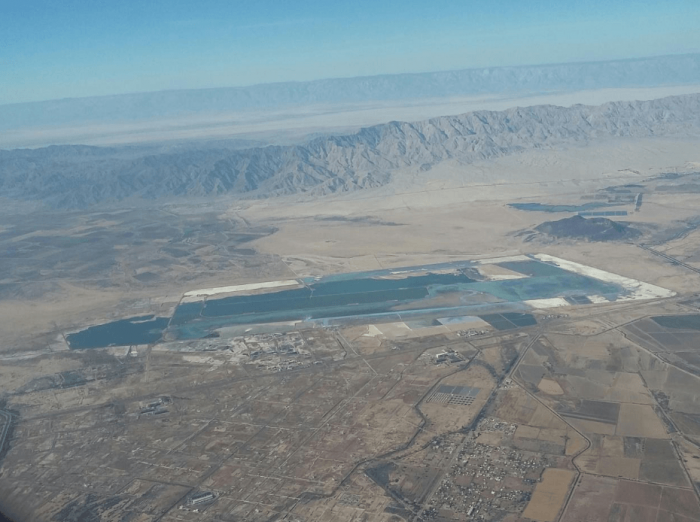
In a world facing the rise of CO2 in the atmosphere, the replacement of fossil fuels with more “green” energies is more relevant than ever. Among alternative energies, geothermal resources are increasingly demanded. Geothermal energy is the thermal energy generated and stored in the interior of the Earth.
A few countries have the chance to be located in regions where the heat flow is very high because of the proximity of active volcanism (mid-ocean ridges and hot-spots as in Iceland or arc volcanism as in New Zealand, Italy, or Japan). Here, the heat flow – the movement of heat from the interior of Earth to the surface – is so intense, that water circulating in sedimentary or igneous reservoirs is heated up to the vapor phase. Steam is collected from wells and used in turbines to generate electricity (high-enthalpy geothermal resources). In countries located in low heat flow areas, i.e., tectonically stable cratons such as Eastern Canada, low-temperature groundwater is used to extract heat in heat exchangers and directly used to climatize buildings (low-enthalpy geothermal resources).
Mexico is one of the countries that has high-enthalpy geothermal resources. The Federal Electricity Commission of Mexico (CFE, Comision Federal Electricidad) exploits several fields where steam is extracted in deep wells at rates of several tens of tons per hours to generate electricity. For four years, an international team of scientists from Mexico, the USA, and Canada have studied the origin and sources of steam contained in these fields, particularly at Cerro Prieto (Baja California).
Cerro Prieto is the largest high-enthalpy geothermal field exploited for electricity production in the world. After 50 years of exploitation, 429 geothermal wells were drilled. Currently, 147 operating wells extract approximately 34.6 million metric tons of steam per year, for a total installed capacity of 570 MWe, capable of providing the electrical consumption needs of the Baja California state.

Aerial view of the Cerro Prieto geothermal field. The central lagoon is where used brines are stored before to be re-injected in the reservoir. The depression in the back is the Imperial Valley. (photo credit A. Lopez-Hernández).
It is generally assumed that the steam derives from freshwater feeding the system and assuring the durability of the resource and a small fraction of magmatic water, i.e. water from the crystallization of the heating magma body. However, reservoirs, such as those containing fossil fuels, might contain another fluid component: connate water, i.e water that has been imprisoned at the moment of the deposition of the rocks, either sedimentary in origin or volcanic. The presence of connate water indicates that the system is relatively closed and that recharge does not have the capacity to completely replenish the reservoir. This has a direct impact on the sustainability of the geothermal resource. Indeed, the lifetime of a geothermal reservoir is related to the capacity of freshwater to feed the reservoir vs. the rate of exploitation of the fluids. The presence of connate water can drastically reduce the lifetime of the reservoir and needs to be estimated. To face these problems, used steam is often re-injected in the reservoir to compensate for the loss of fluid and pressure at depth.
The authors of the study used noble gas isotopes to trace the sources of fluids in the geothermal fields of Cerro Prieto. Noble gases are inert elements, which means that they preserve their elemental (and isotopic) composition of the sources of fluids in which are contained. Particularly useful is the isotopic composition of helium (3He/4He ratio).
3He is abundant in the terrestrial mantle but not in the atmosphere. Magmatic water will contain a lot of 3He, while freshwater (which contain dissolved atmospheric helium) will not. Connate water will accumulate with time radiogenic 4He, which is produced by the decay of U and Th contained in the reservoir rocks. Using these isotopes, the authors of this study have shown that the groundwater contained in the Cerro Prieto reservoir is indeed a mixture of the three fluids: magmatic, freshwater, and connate water.
Because the total amount of radiogenic 4He in the fluid is proportional to its production rate in the rock, a gross estimate of the fluid residence time can be calculated. Results give water “ages” of 1.5-1.8 million years, which is the age of deposition of deltaic sediments that constitutes the geothermal reservoir of Cerro Prieto. This means that part of the steam produced at Cerro Prieto is as old as the rock which contains it. This discovery put a serious threat on the sustainability of the geothermal resource, as any fossil energy stored in the terrestrial crust. This connate component of fluids needs to be clearly identified and volumes precisely estimated to determine the durability of the resource and for a correct management planning for future exploitation of this energy form.
These findings are described in the article entitled Cerro Prieto Geothermal Field (Baja California, Mexico) – A fossil system? Insights from a noble gas study, recently published in the Journal of Volcanology and Geothermal Research.









